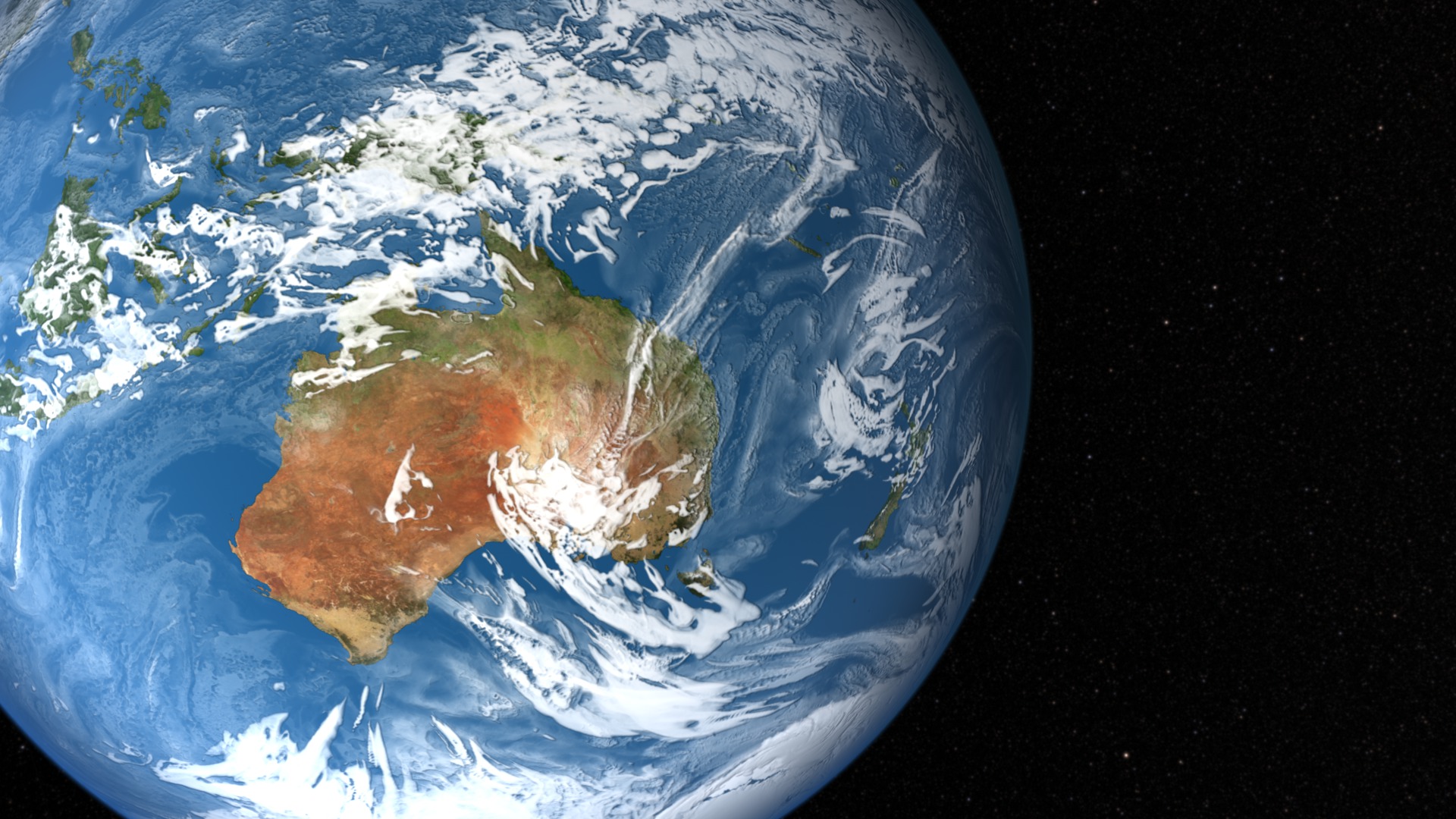Under The Influence
Sheets of crisp, bright white clouds blanket our planet. That's true even in particularly dry places like the island continent of Australia. There, cloud-filled skies are mainly observed during the rainy winter season, except in the north, where the majority of storms take place in summer. Australia sits far south of the equator and under a strong, migrating zone of high-pressure called the subtropical ridge. These conditions influence its climate and expose the continent to a variety of weather extremes: drought, floods, heat waves, severe storms and tropical cyclones. At the same time, Australia gets more than 3,000 hours of sunshine each year, making it one of the sunniest places in the world. And, its clouds look incredibly cool from space. Using an advanced supercomputer climate model called GEOS-5, NASA scientists recreated 19 days of changing cloud cover over Australia. Watch the visualization to explore the movement of different systems that formed across the continent.

The atmosphere hanging over Australia makes for some wicked clouds and climate.
Look for rising cumulus clouds that appear to bubble up over land each day.

Strange physics created these overlapping arcs called wave clouds seen by NASA's Terra satellite off Australia's northwest coast.

Dimpled marine stratocumulus clouds hook around Australia's island state of Tasmania in this image captured by NASA's Aqua satellite.

This bank of clouds imaged by NASA's Terra satellite extended hundreds of miles, covering areas of Western Australia and parts of the south.

NASA's Aqua satellite looked down over an anticyclone off the coast of South Australia and found this patch of clear sky encircled by clouds.
Credits
Please give credit for this item to:
NASA's Goddard Space Flight Center
-
Animators
- Neema Mostafavi (USRA)
-
Alex Kekesi
(Global Science and Technology, Inc.)
-
Ernie Wright
(USRA)
-
Producer
- Ryan Fitzgibbons (USRA)
-
Scientist
- William Putman (NASA/GSFC)
-
Writer
- Kayvon Sharghi (USRA)
Release date
This page was originally published on Tuesday, October 2, 2012.
This page was last updated on Wednesday, May 3, 2023 at 1:52 PM EDT.
